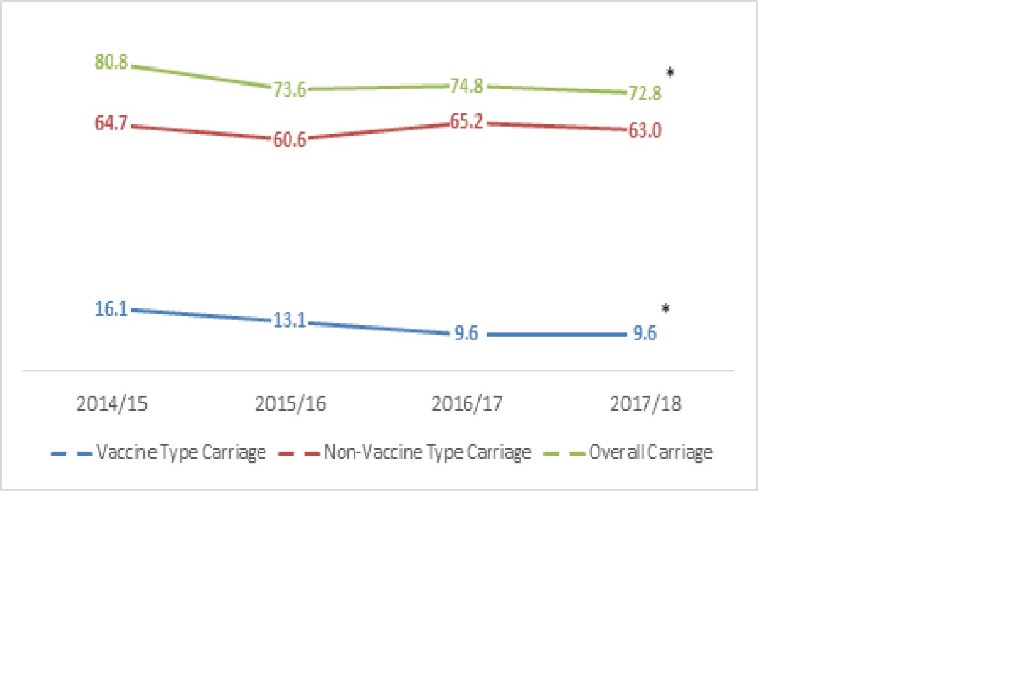Saad B. Omer,
Poster Author Of 3 e-Posters
INTRODUCTION OF TEN VALENT PNEUMOCOCCAL VACCINE IMPARTS INDIRECT PROTECTION TO CHILDREN IN A RURAL POPULATION IN PAKISTAN
FACTORS ASSOCIATED WITH VACCINE TYPE PNEUMOCOCCAL CARRIAGE IN CHILDREN UNDER 2 YEARS OF AGE IN A RURAL POPULATION IN PAKISTAN
SERO-REPLACEMENT WITH NON-VACCINE SEROTYPES POST INTRODUCTION OF PCV10 IN NASOPHARYNX OF CHILDREN IN A RURAL COMMUNITY IN PAKISTAN
Author Of 3 Presentations
FACTORS ASSOCIATED WITH VACCINE TYPE PNEUMOCOCCAL CARRIAGE IN CHILDREN UNDER 2 YEARS OF AGE IN A RURAL POPULATION IN PAKISTAN (ID 1092)
Abstract
Background
Pneumococcal carriage is a prerequisite for disease with children being the main reservoir and transmitters. Here, we look at factors associated with Vaccine type (VT) carriage in children under 2 years of age in a rural population in Pakistan.
Methods
Children were enrolled and nasopharyngeal swabs collected using standard WHO guidelines. Serotyping was done using CDC standardized Multiplex PCR. The serotypes were classified as vaccine type (VT) and non-vaccine type (NVT) based on their inclusion in the ten valent vaccine (PCV10).
Results
From 2014-2018, 3140 children were enrolled. Factors negatively associated with VT carriage were: primary education of 1 to 5 years (aOR 0·7, 95%CI 0·5-0·9), history of difficulty in breathing (aOR 0·7, 95%CI 0·6-0·9), exposure to smoke (aOR 0·8, 95% CI 0·6-0·9), child fully immunized (aOR 0·7, 95%CI 0·5-0·9) and being enrolled in 3rd (aOR 0·6, 95%CI 0·4-0·8) and 4th year of study (aOR 0·6, 95%CI 0·5-0·9) whereas history of runny nose was positively associated (aOR 1·6, 95% CI 1·2-1·9).


Conclusions
Various socio-demographic and clinical factors were associated with VT carriage. A child having received all three doses of PCV10 significantly reduced the odds of carrying a VT serotype.
SERO-REPLACEMENT WITH NON-VACCINE SEROTYPES POST INTRODUCTION OF PCV10 IN NASOPHARYNX OF CHILDREN IN A RURAL COMMUNITY IN PAKISTAN (ID 1104)
Abstract
Background
Ten-valent pneumococcal vaccine (PCV10) was introduced in Pakistan’s immunization program in 2012. It is important to monitor changing sero- epidemiology post introduction for relevance of existing vaccine formulation.
Methods
From 2014 to 2018, children under the age of 2 years were enrolled from a rural district in Pakistan. Nasopharyngeal swabs were collected and serotyping was done using Multiplex PCR.
Results
Of the 3140 children enrolled, pneumococcal isolates were detected in 2370(75%). VT carriage decreased from 16·1% to 9·6% (p-value< 0·001) over 4 years. There was a significant decline in VT serotypes 6B, 9V/9A and 19F only. The carriage of serotype 19A significantly increased from 4.0% to 6.8% (p-value< 0·001). This increase was more pronounced in vaccinated group. There was no significant change in the ten most common NVT serotypes except for 10A, which increased over time. There was no decline noted in carriage rate for serotype 6A.
Conclusions
We observed an ongoing shift in the pneumococcal carriage of serotypes in children in the rural community. Since the pneumococcal serotypes associated with carriage and Invasive disease are constantly changing, monitoring is necessary to assess the impact of the vaccine and to develop better vaccination strategies.

INTRODUCTION OF TEN VALENT PNEUMOCOCCAL VACCINE IMPARTS INDIRECT PROTECTION TO CHILDREN IN A RURAL POPULATION IN PAKISTAN (ID 978)
Abstract
Background
Ten-valent pneumococcal vaccine was introduced in Pakistan’s immunization program in 2012 as 3+0 schedule without catchup immunization.
Methods
From 2014 to 2018, children were randomly selected from a line listing in two union councils of Matiari, Pakistan. Nasopharyngeal swabs were collected using standard WHO guidelines and processed at Infectious Disease Research Laboratory at Aga Khan University in Karachi. Serotypes for pneumococcal isolates were deduced using published sequential multiplex PCR assays.
Results
Of 3140 children enrolled, pneumococcal isolates were detected in 2370(75%). VT carriage decreased from 11.4 to 8.2 % (p-value=0·031) in vaccinated group and from 19.3 to 12.7% (p-value= 0·003) in non-vaccinated group. On average VT carriage decreased from 16·1% to 9·6% (p-value<0·001). Most significant decline was seen in serotypes 6B, 9V/9A and 19F. Proportion of fully immunized children changed from 41·0% to 68·4% (p-value<0·001). Direct effect of the vaccine was calculated to be 33·5% (95% CI 19·5%-55·0%) and indirect effect to be 44·1% (95% CI 28·1% -56·6%).


Conclusions
We saw substantial decline in pneumococcal carriage in young children in a rural community which was seen in both vaccinated and unvaccinated groups. This is indicative of herd immunity and will hopefully translate to decrease in pneumococcal disease burden in population.



